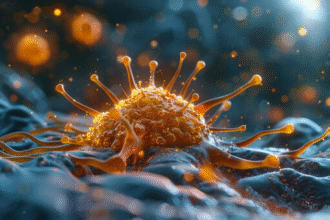Psoriasis: What You Need to Know
Psoriasis is a chronic, immune‑mediated skin disease. The most common type, plaque psoriasis, causes well‑demarcated, erythematous plaques with overlying silvery scale. It’s not contagious, tends to wax and wane, and is associated with systemic comorbidities.
Key Features and Variants
- Plaque psoriasis: symmetric plaques on extensor surfaces (elbows, knees), scalp, lumbosacral area; Auspitz sign (pinpoint bleeding when scale is removed).
- Nail disease: pitting, onycholysis, subungual hyperkeratosis, nail crumbling.
- Scalp, inverse (intertriginous/flexural), guttate (post‑streptococcal), palmoplantar, pustular, and erythrodermic variants.
- Koebner phenomenon: new lesions at sites of skin injury.
Common Triggers and Risk Factors
- Infections (especially streptococcal for guttate), stress, cold/dry weather, smoking, alcohol, skin trauma, certain medications (e.g., beta‑blockers, lithium, antimalarials), and abrupt steroid withdrawal.
- Flares around menses can occur; pregnancy course is variable.
Associated Conditions
- Psoriatic arthritis (joint pain, morning stiffness, dactylitis, enthesitis).
- Metabolic syndrome, obesity, dyslipidemia, type 2 diabetes, hypertension, nonalcoholic fatty liver disease.
- Depression and anxiety; increased cardiovascular risk.
Diagnosis
- Usually clinical based on morphology and distribution; consider dermoscopy.
- Skin biopsy when diagnosis is uncertain or to rule out mimickers (tinea, eczema, cutaneous T‑cell lymphoma).
Treatment Options
Choice depends on severity, location, and impact on quality of life. Combine emollients with targeted therapies.
Topical therapy (first‑line for mild disease)
– Corticosteroids (potency matched to site; limit strong steroids on face, genitals, and folds; pulse or weekend therapy to reduce atrophy).
– Vitamin D analogs (calcipotriene/calcitriol), often combined with steroids.
– Topical retinoid (tazarotene) for plaques; avoid in pregnancy.
– Calcineurin inhibitors (tacrolimus/pimecrolimus) for face and intertriginous areas (off‑label for psoriasis).
– Scalp: medicated shampoos (tar, salicylic acid) and steroid foams/solutions.
Phototherapy (for widespread or refractory disease)
– Narrowband UVB is preferred; PUVA in select cases. Monitor for phototoxicity and long‑term risks.
Systemic/biologic therapy (moderate–severe disease or psoriatic arthritis)
– Oral agents: methotrexate, cyclosporine, acitretin, apremilast. Monitor labs and contraindications (e.g., hepatotoxicity with methotrexate, teratogenicity with acitretin/methotrexate).
– Biologics: TNF‑alpha inhibitors (e.g., adalimumab), IL‑17 inhibitors (e.g., secukinumab), IL‑23 inhibitors (e.g., guselkumab), and IL‑12/23 inhibitor (ustekinumab). Screen for TB and hepatitis before initiation; ongoing infection monitoring needed.
– Avoid systemic corticosteroids when possible due to risk of rebound or pustular flares unless specialist‑directed.
Special Areas and Populations
- Face, genitals, and skin folds: favor low‑potency steroids, calcineurin inhibitors, and careful use of vitamin D analogs.
- Pregnancy/breastfeeding: prefer emollients, low‑ to mid‑potency topical steroids, and NB‑UVB; avoid methotrexate, acitretin, and tazarotene.
- Children: emphasize emollients, appropriate‑potency topicals, and specialist guidance for phototherapy/systemics.
Daily Care and Lifestyle
- Emollients: apply liberally after bathing; ointments/creams are more effective than lotions.
- Gentle skin care; avoid harsh scrubs and picking scales.
- Manage weight, stop smoking, limit alcohol; treat streptococcal infections when present.
- Stress reduction (sleep, exercise, CBT/mindfulness) may help with flares.
When to Seek Medical Care (Red Flags)
- Extensive body‑surface involvement; face/genital involvement with significant symptoms.
- Signs of infection (increasing pain, redness, warmth, pus) or fever.
- Pustular lesions, erythroderma, or rapid worsening.
- Joint pain or stiffness (possible psoriatic arthritis).
What Not to Do
- Don’t apply acids, vinegar, garlic, cayenne, or homemade concoctions to lesions — they can irritate and worsen the skin.
- Avoid long‑term use of potent topical steroids without guidance; monitor for skin atrophy and tachyphylaxis.
- Antibiotics don’t treat psoriasis unless there’s a secondary bacterial infection.
Educational information only; work with a clinician to tailor therapy and monitor for comorbidities, especially psoriatic arthritis and cardiovascular risk.







